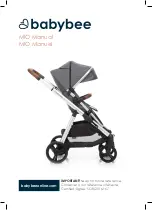
34
S&C Instruction Sheet 681-530
Single-Phase Trip/Single-Phase Lockout
An interrupter in
Single-Phase Trip/Single-Phase Lockout
mode is equipped with
single-pole fault interrupters. Phases A, B, and C of the interrupting way can be configured
independently, and only the affected phase will trip and lock out in response to a Trip
event.
Ground Protection
,
Negative Sequence
, and
Sensitive Earth Fault
settings
are disabled.
Single-Phase Trip/Single-Phase Lockout
mode is only available on
12.5-kA and 16-kA models of Vista Underground Distribution Switchgear.
Single-Phase Trip/Three-Phase Lockout
An interrupter in
Single-Phase Trip/Three-Phase Lockout
mode is equipped with
single-pole fault interrupters. Phase A, B, and C are all configured with the same protective
settings, selected under Phase A. All three phases will trip and lock out in response to
a Trip event.
Ground Protection
,
Negative Sequence
, and
Sensitive Earth Fault
protection settings are available for switchgear in this
Trip
Mode
setting.
Single-
Phase Trip/Three-Phase Lockout
mode is only available on 12.5-kA and 16-kA Vista
switchgear models.
Three-Phase Trip/Three-Phase Lockout
An interrupting way in
Three-Phase Trip/Three-Phase Lockout
mode is equipped with
three-pole fault interrupters. Phase B is used to configure the settings for the three-pole
fault interrupter. All three phases will trip and lockout in response to a Trip event.
Ground
Protection
,
Negative Sequence
, and
Sensitive Earth Fault
protection settings are
available for switchgear in this
Trip
Mode
setting.
Each overcurrent control is capable of operating up to two fault interrupters. To
differentiate between the two fault interrupters, they are called Interrupter 1 and
Interrupter 2 in this instruction sheet, though they will be renamed at the factory
according to their “Way” designation. These interrupters may be renamed by the user.
See the “Changing the Interrupter ID” section on page 29.
On switchgear with only one fault-interrupting way, only Interrupter 1 is used in the
control. On switchgear with more than two fault-interrupting ways, there will be more
than one overcurrent control. The fault interrupters controlled by the overcurrent control
will be named according to their “Way” designation and will be clearly labeled on the
outside of the overcurrent control enclosure.
The
Interrupter 1
and
Interrupter 2
menus allow the user to change the protective
settings for the selected fault interrupter. See Figures 30 and 31 on page 35.
The Overcurrent
Protection Settings
Available for Each Trip
Mode
Programming
Interrupter 1 and
Interrupter 2
Programming the Overcurrent Protection Settings
















































